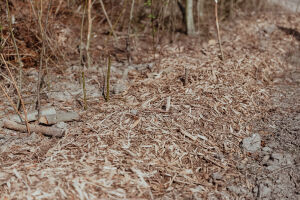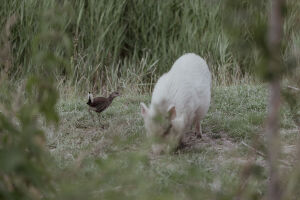INSIGHTS
05 oktober 2022
balance in nature
World Animal Day, a good time to zoom in on exactly how this works with the natural balance, biodiversity, and the role of animals in it.
More and more leaves are falling outside, which we increasingly leave in our gardens. Because we have learned that these leaves contain the food that trees and shrubs can grow again next year. This cycle must be disturbed as little as possible, in order to restore the balance in nature. However?
Not quite, says Jos Willemsen. Or not at all. Yes, the idea of feeding soil life with leaves and branches is correct. And hedgehogs can find shelter in it. Only dry autumn leaves and dead branches do not contain the right amounts of nutrients that soil life needs. It is therefore much better to prune in the middle of summer, when plants, shrubs and trees are full of energy, and return the clippings to the earth.
This actually means that it is not the balance, but the disruption of that balance that is the main motor behind a healthy nature! Very different from the circular 'leaving everything neatly within the lines' that we are now used to doing.
It's a matter of rethinking, but if you look at healthy nature, you see that disruption processes are an important part of nourishing growth, more growth and even more growth - the cosmic movement of which we are all part. Not preserving life and energy, but creating more life and accumulating even more energy makes for a healthy thriving planet.
Think of an elephant with its heavy body pushing some trees here and there, a herd of horses that gallop to entire prairies, wolves chasing deer, pigs digging up the ground while collecting acorns. And even those big summer storms, in which many trees deal with heavy foliage: these are all very healthy disturbance processes, from which nature benefits.
In a heavily cultivated world and society, there is less and less room for significant disruptions. Checking and competing is the motto here. Animals must remain within the fence, harvest is only allowed from the land in the third week of August and leaves and farting cows get to quarrel with The Hague. Control, competition and above all a lot of resistance.
Jos shows that the path of least resistance can yield the best efficiency for life, energy and natural capital (and therefore also a well-filled entrepreneur's wallet). By working with nature, and by seizing its own place within its unique collaborative dynamics.
E.g. that is why at ONS BUITEN the chickens and pigs are living nomadic lives, we (also) mulch during the summer and look closely at how the different life cycles of plants, shrubs and trees influence each other, in order to make our useful contribution as human beings to the process.
Of course you need all those animals and especially the right (knowledge of) dynamics for that. You can read how special, complicated (and at the same time so fascinating, logical and simple) it all is in this article by Jos Willemsen in EM Magazine. Also in your garden! And in the meantime you learn how to change your thinking from circular to creative.
Jos also gives a two-day course on this subject at ONS BUITEN. On October 24 and 25, registration is still possible!
Translated with Google



